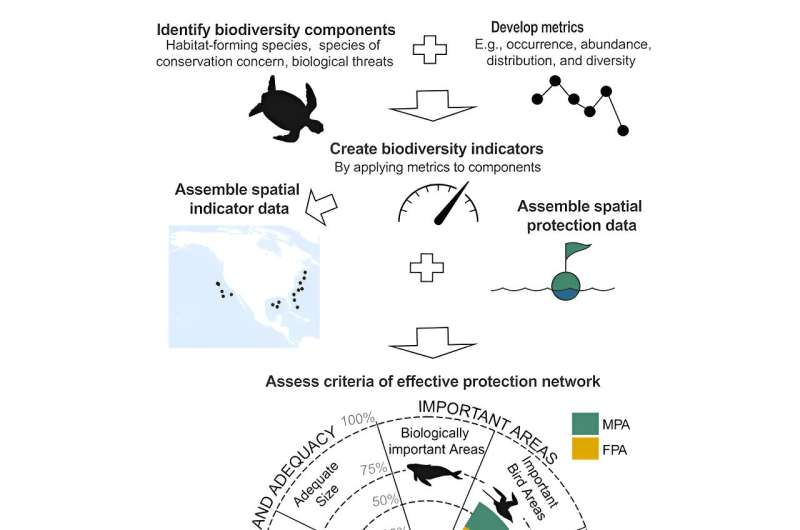This article has been reviewed according to Science X's editorial process and policies. Editors have highlighted the following attributes while ensuring the content's credibility:
fact-checked
trusted source
proofread
A plan to protect the biodiversity of US waters

Marine biodiversity is in crisis around the globe. Climate change, overfishing, habitat destruction and other extractive industries are causing species losses at an alarming rate. Scientists, managers, and governments are taking steps to protect marine life, but this requires a network of protected areas that are ecologically representative, foster connectivity between habitats, and consider the dynamic nature of coastal and marine habitats.
These ecosystems have been the subject of an internationally recognized program led by researchers at Nova Southeastern University's (NSU) Halmos College of Arts and Sciences and Guy Harvey Oceanographic Research Center.
This program, DEEPEND, is led by Tracey Sutton, Ph.D., an NSU professor and director of the DEEPEND Research Consortium. Sutton was among 28 scientists, economists, and marine policy experts worldwide who were invited to assess the U.S. strategy for marine biodiversity protection. Sutton participated in a series of dialogues and workshops over the last three years, the results of which have just been published as a framework for biodiversity protection in U.S. waters.
A fundamental challenge to marine biodiversity protection is the poor understanding of the diversity and distribution of marine life, making it more difficult to designate protective measures and assess their success.
"The marine environment presents unique challenges: the world ocean is vast, much of it is distant from human populations, its life is often hidden from view, and sampling presents formidable logistical difficulties," Sutton said. "As a result, observations of ocean life are a fraction of those on land and are especially sparse in the water column and deep sea."
"It's important to know that this research continues," said Sutton. "There is so much more to learn and understand about the world's oceans, and we're committed to the research and the work, as we must do all we can to help keep our oceans healthy and vibrant for future generations."
The paper is published in the journal One Earth.
More information: Sarah A. Gignoux-Wolfsohn et al, New framework reveals gaps in US ocean biodiversity protection, One Earth (2024). DOI: 10.1016/j.oneear.2023.12.014
Provided by Nova Southeastern University


















